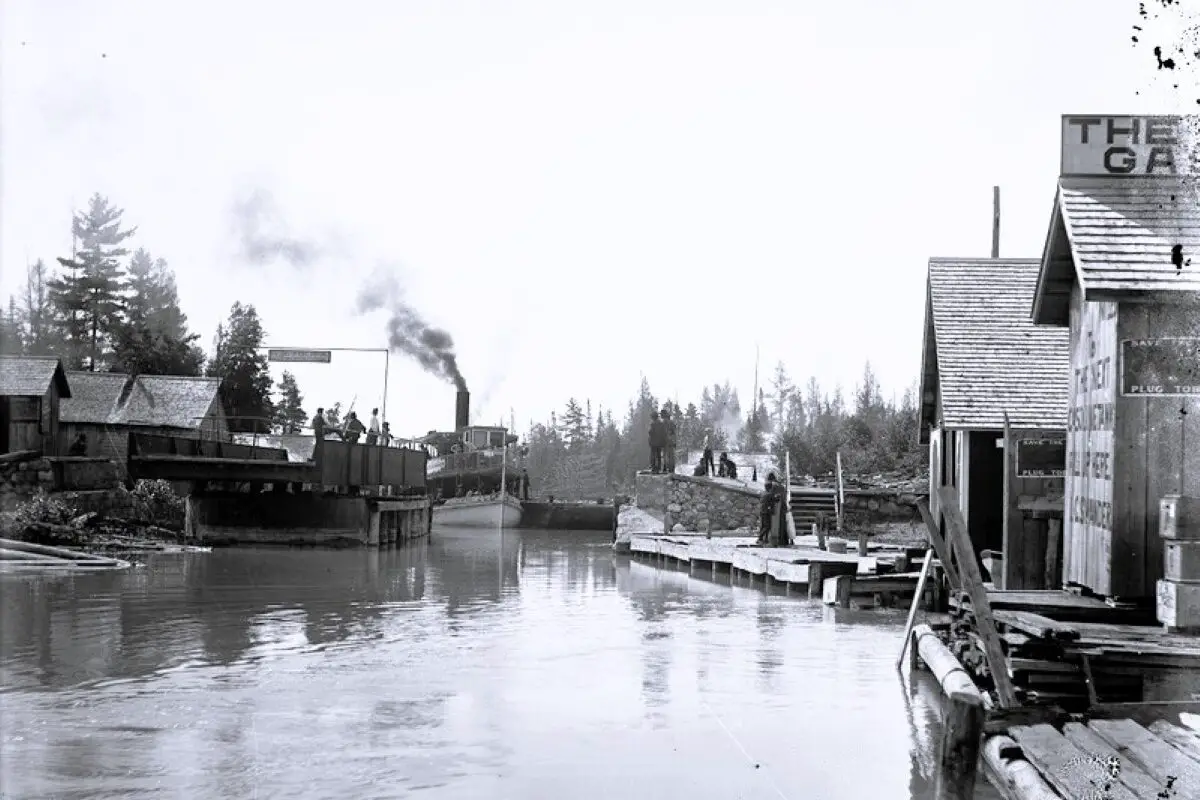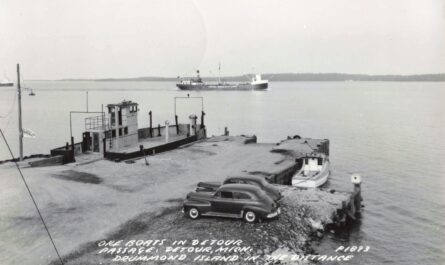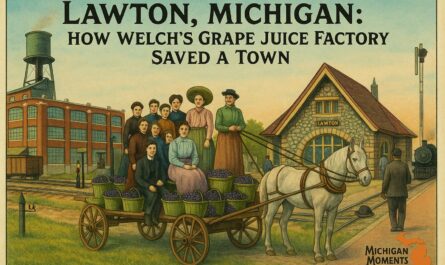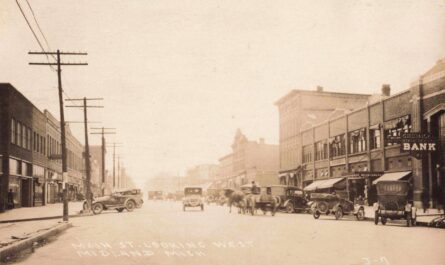The history of Alanson Michigan begins in the mid-1870s, when homesteaders first arrived in what is now Littlefield Township. A post office opened on January 17, 1877, under the name Hinman, and when the Grand Rapids & Indiana Railroad reached the area about 1882, the village was renamed Alanson – reportedly for Alanson Howard, grandson of the railroad president. (Some accounts say it honored Alanson Cook, a railroad official.) The community formally organized as the Village of Alanson in 1905, during Michigan’s lumber boom. (Today’s village motto even notes it was “first settled in 1875 and incorporated in 1905”.)
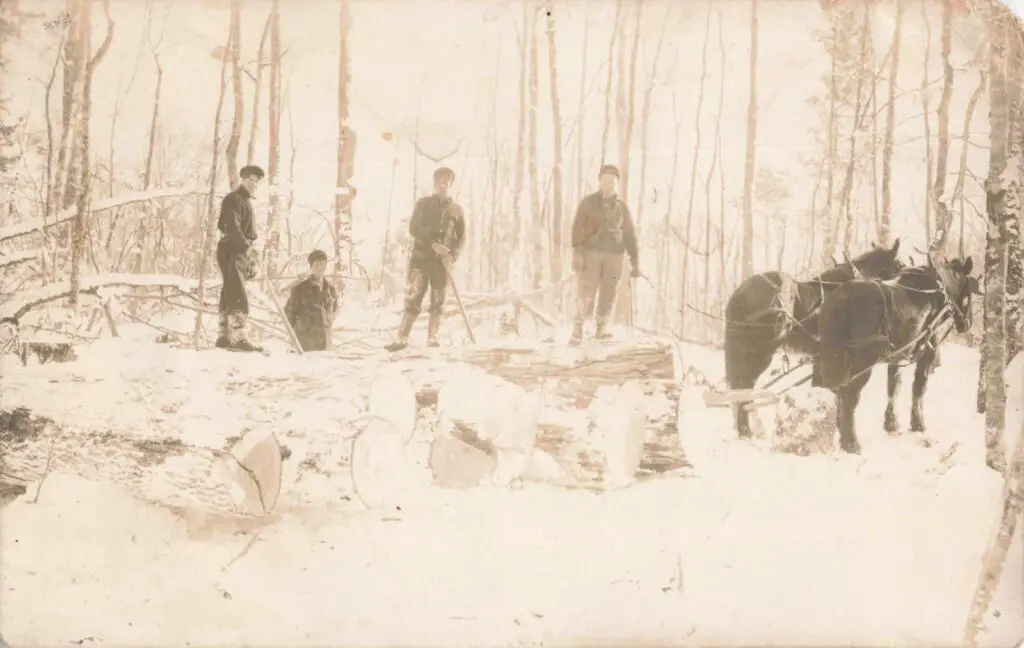
The new village even had a hardware store and a small hotel, typical businesses of a logging town. A general store, a post office, and a church served the pioneer families. Children went to a one-room schoolhouse, and neighbors helped each other through the harsh winters by sharing supplies and labor. In these years, Alanson’s history was being written in sawdust and sternwheeler smoke along the river.
Video – River Rail Waterway – The Story of Alanson Michigan
Railroad and Early Growth of Alanson
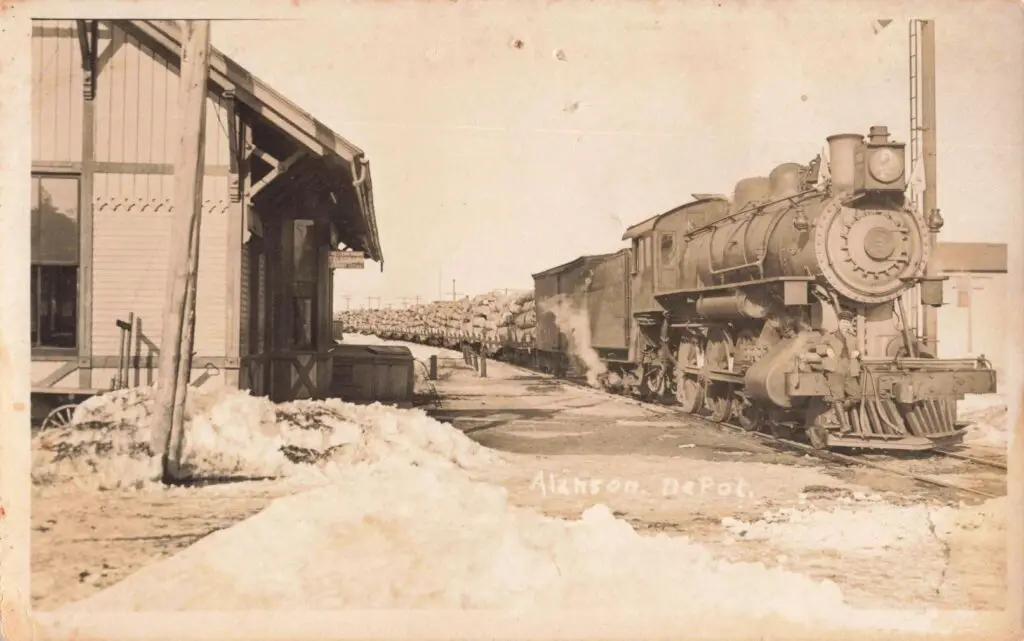
Rail service was critical to Alanson’s development. Around 1884 the Grand Rapids & Indiana line was extended north from Conway (Oden) into Alanson, and in 1892 the railroad built a depot at Burr Avenue and River Street. By the first decade of the 1900s passenger trains were running between Petoskey and Alanson. The new rail connection spurred growth: the village’s population reached a few hundred before 1910 (about 300 people by 1903). Local businesses and services clustered around River Street (the main downtown) and the riverfront. (Period postcards show a bustling River Street business district and even a hillside garden near the old depot.)
Lumbering Industry Dominance
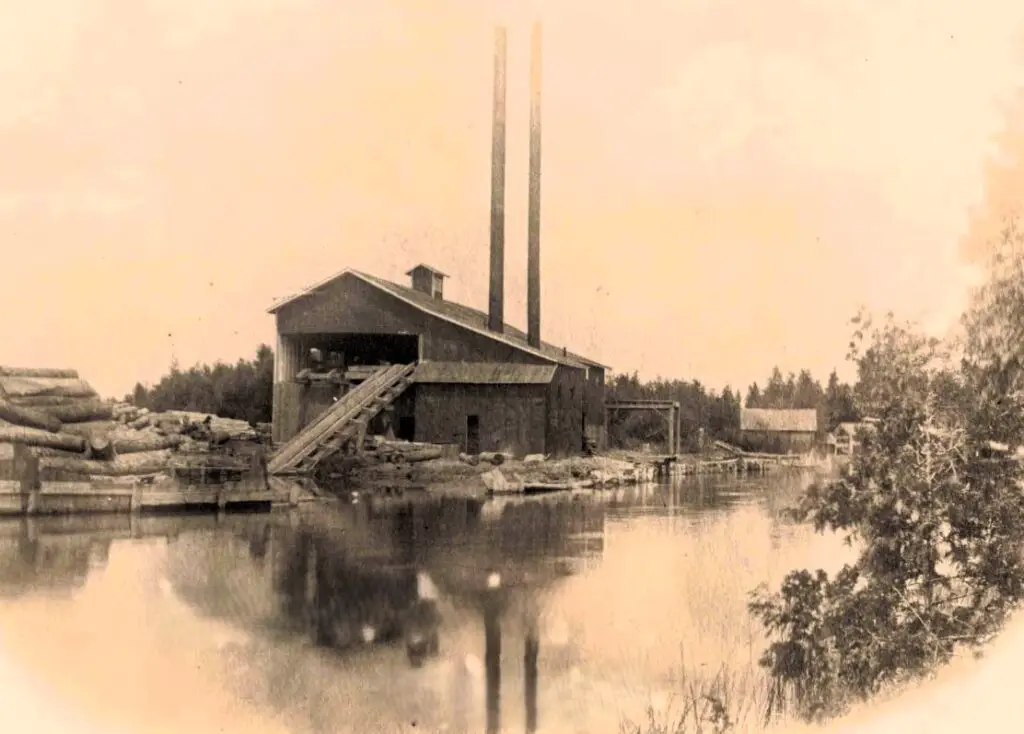
Through the late 1800s and 1910s Alanson was very much a lumber town. Surrounding forests were harvested and milled locally. Sawmills on River Street and nearby cut timber that was floated downriver or loaded onto rail cars. For example, a large “Merchant Mill” lumberyard on River Street burned in August 1910, destroying over 1.5 million board feet of lumber. Local merchants catered to loggers: Walter W. Fairbairn opened a hardware and plumbing store in 1895 to serve the camps. The lumber trade drove jobs and population – by 1910 Alanson’s population peaked (roughly 575 people, though census figures vary). (Handle factories and related industries also operated in the village around 1900.) In short, logging was the economic backbone of early Alanson.
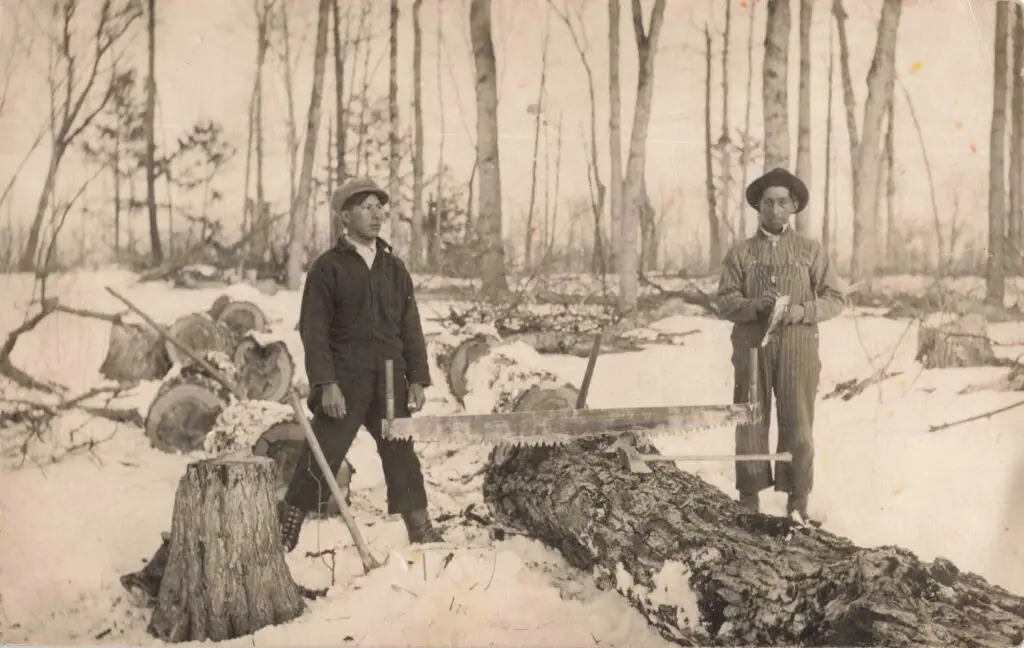
The sawmills ran day and night, turning those logs into boards and planks for building. Many men in the community worked in the mills or in logging camps deep in the woods. It was the busiest era in the village’s history: steam whistles blew hourly and sawdust filled the air. Every board sawn here might end up in a new house or barn elsewhere, all shipped out by river or rail.
River and Inland Waterway Tourism
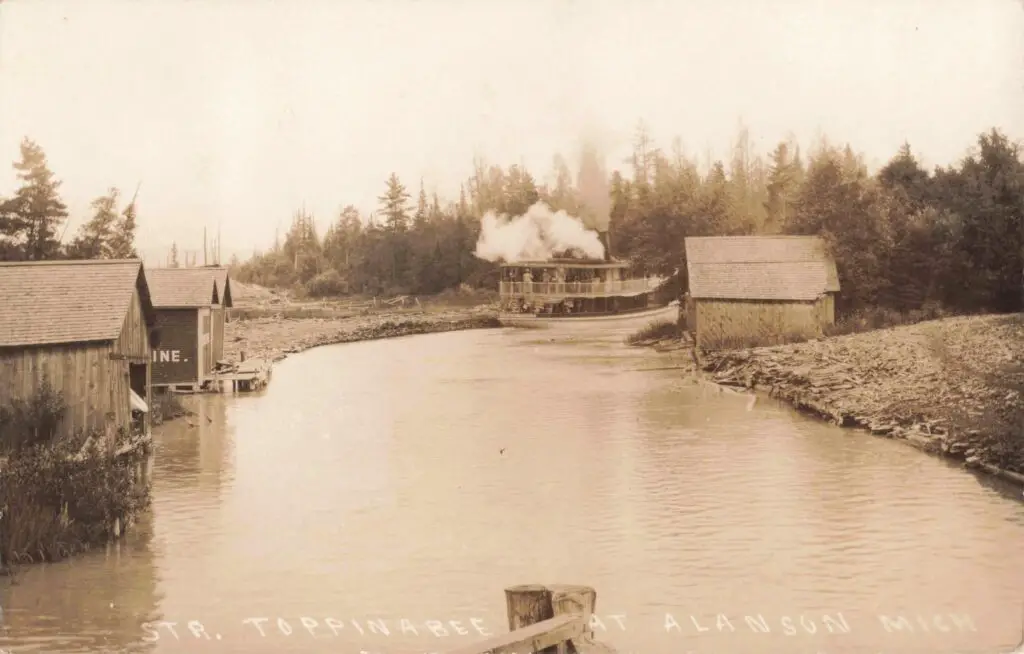
Alanson’s location on the Crooked River – part of the famed Inland Waterway of connected lakes and rivers – made it a summer destination as well. Tourists could travel by rail to Alanson and then boat through Crooked and Burt Lakes north toward Cheboygan.
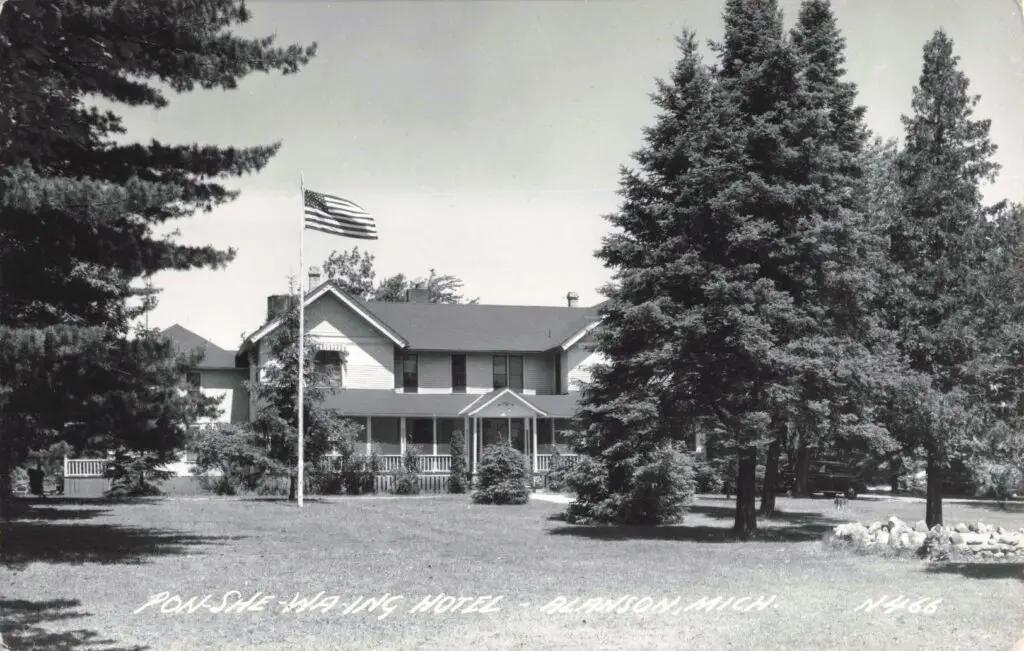
An 1907 excursion brochure shows the steamer Topinabee making daily trips from Petoskey through Alanson up to Mackinac Island. In fact, in July 1907 the Topinabee’s itinerary listed “stops along the way” including Alanson (along with Pon-she-wa-ing, Columbus Landing, etc.) on a “voyage of enchantment” through the scenic lakes. Nearby hotels and boat liveries served fishermen: passengers would take launches from Alanson downriver into Crooked and Pickerel Lakes to reach fishing camps, then return in the evening by launch. This lake-and-river route was a key part of Alanson’s identity (today the Inland Waterway Museum sits on historic River Street).
Changes by 1940
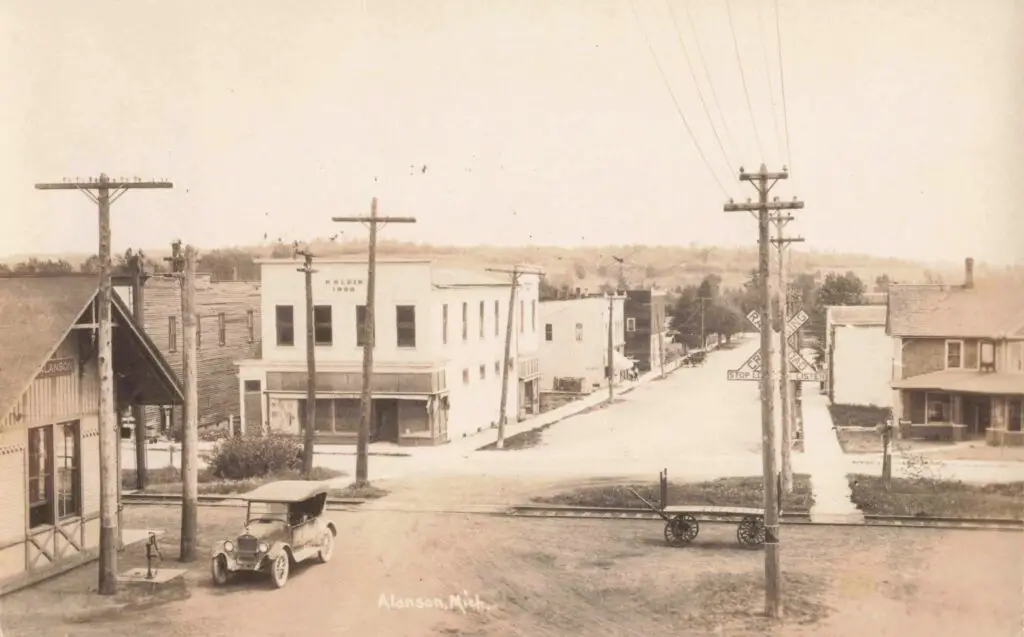
After World War I, the logging industry faded and Alanson’s growth slowed. Many sawmills closed or were dismantled by the 1920s. Census figures reflect the change: Alanson’s population fell from the early 1900s peak (about 473 in 1910 by federal count) down to 332 in 1920 and only 287 by 1930, before rebounding modestly to about 330 by 1940.
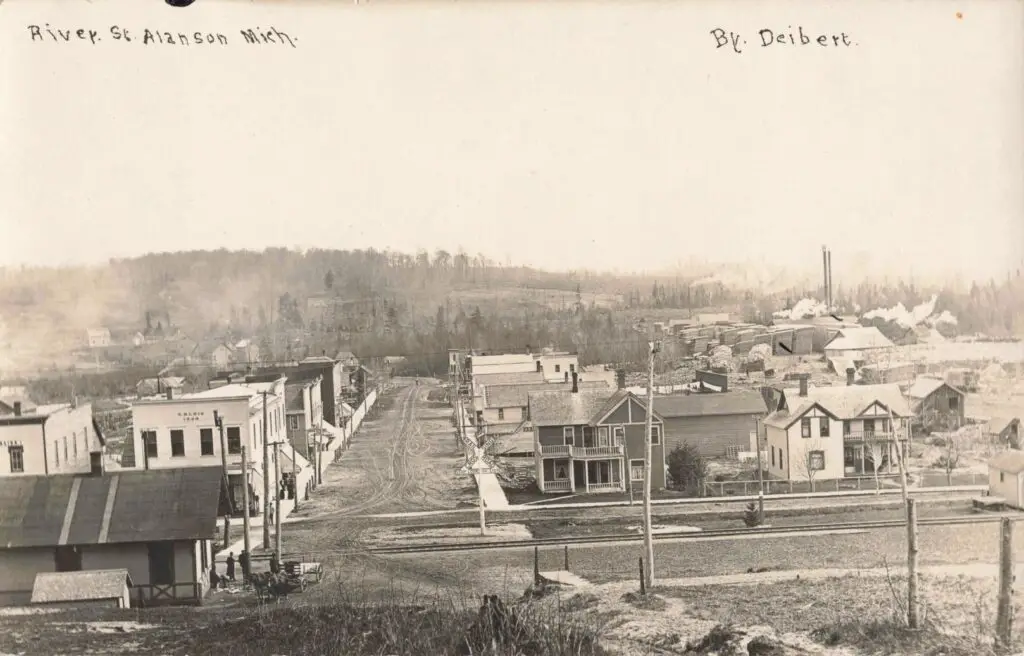
During the Great Depression the village struggled; with the lumber industry gone, some residents turned to farming or logging in other regions, while others left in search of factory work. A few small shops and even a bank stayed open through the 1940s, but none matched the scale of the old sawmills. By the mid-1940s, Alanson’s busy days were over – the roar of saws was replaced by silence, and Main Street had fewer shops than before.
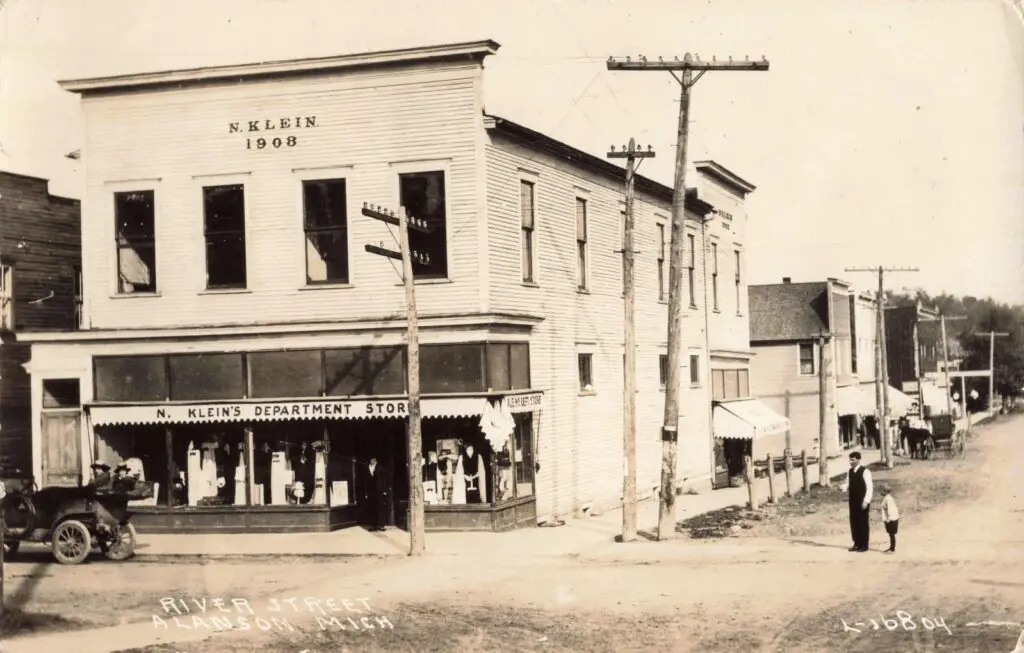
Meanwhile, transportation shifted to automobiles – U.S. Route 31 (established in 1926) passed just west of the village – though the Crooked River swing bridge remained (and remains) a landmark. By 1940 Alanson was still a small village: its boom years of logging were over, replaced by a quiet mix of local shops, farming, and the seasonal tourism drawn by the river and lakes.
Images on this page may contain affiliate links in which we may receive a commission. See our affiliate disclosure for details.
Historic Photos of Detroit in the 50s, 60s, and 70s
Historic Photos of Detroit in the 50s, 60s, and 70s documents what a Metro Detroiter would have experienced through those decades, from the commonplace—to a visit from John F. Kennedy.
History of Alanson Michigan: Village Remains
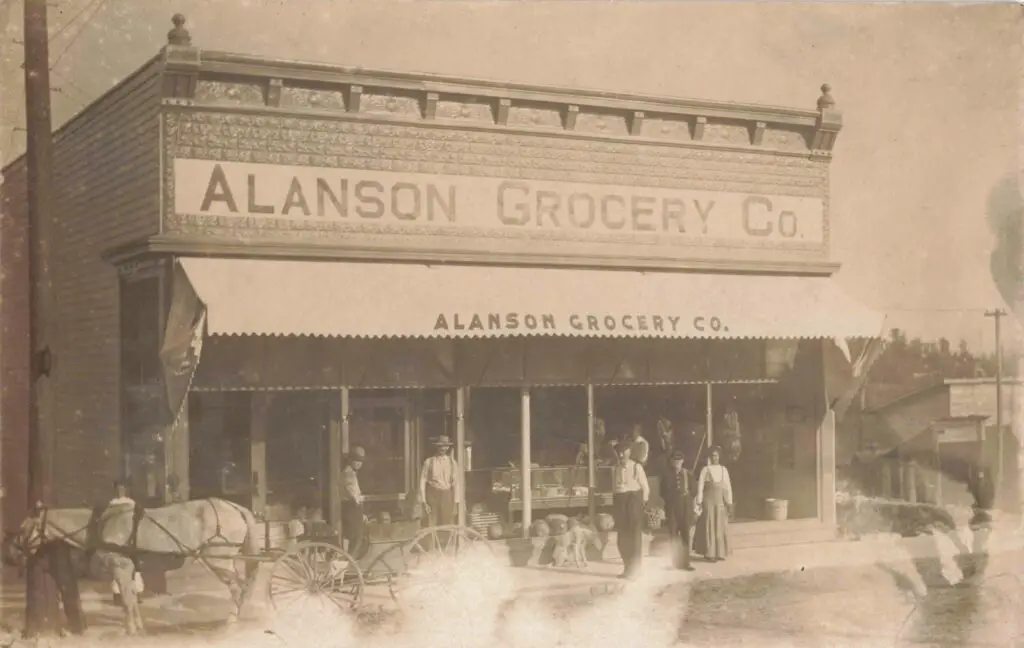
Still, Alanson did not vanish. The village kept a quiet downtown and a few historic buildings from the early 1900s. Residents proudly say the town still “retains the character of that bygone era”. In fact, the Inland Waterway Historical Society now runs a small museum in Alanson. It displays old photographs, railroad tools, and stories of the logging days. Today you can stand on the riverside boardwalk and see the same trees and hills that logging families saw over a century ago – a living reminder that the past is never far away.
History of Alanson Michigan: Legacy of the 1800s
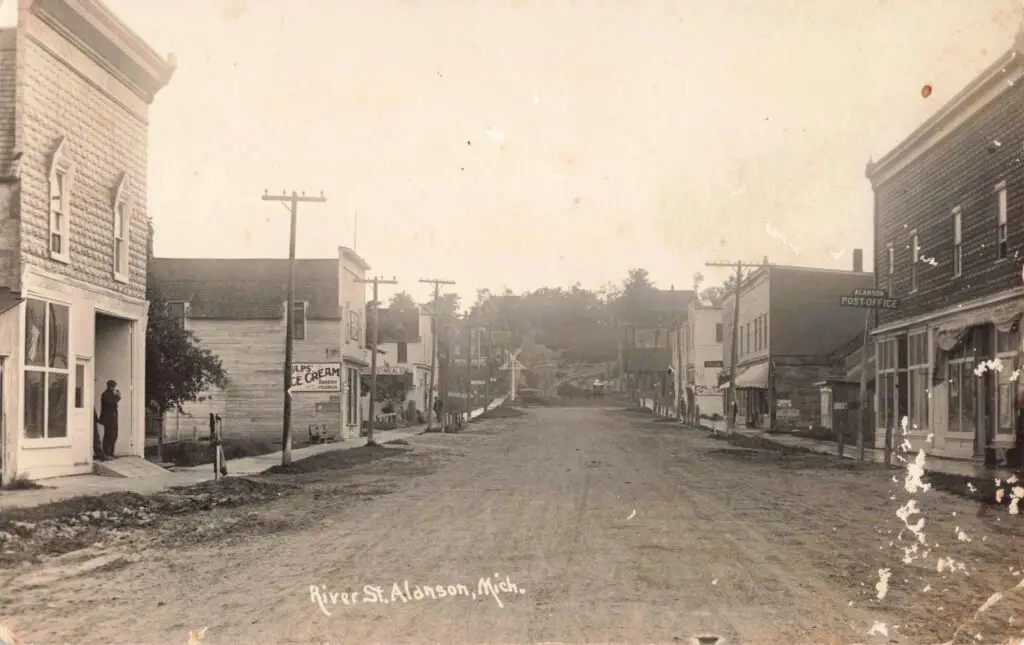
Today, visitors strolling the parks by the Crooked River or browsing antiques downtown might not guess the fierce history underneath. But Alanson’s stories are remembered by the community. Even the annual Fourth of July parade nods to the town’s pioneer spirit, marching down Main Street (laid out over a century ago). In all, the History of Alanson Michigan is a small but vivid chapter in Northern Michigan’s past. It shows how a tiny village was built by loggers, riverboats, and trains. It reminds us that even quiet villages have rich histories waiting to be discovered.
Works Cited
- Village of Alanson. Village of Alanson Official Website.
- Wikipedia contributors. “Alanson, Michigan.” Wikipedia: The Free Encyclopedia. .
- MichiganRailroads.com. “Alanson, MI.” MichiganRailroads.com,
- Coldwell Banker Fairbairn Realty. “Alanson Swing Bridge.” Fairbairn Realty Blog, 26 Aug. 2021.
- Zwarensteyn, Jill. “Michigan’s Inland Waterway Hides a Friendly Village…” Islands.com, 28 Aug. 2025, .
